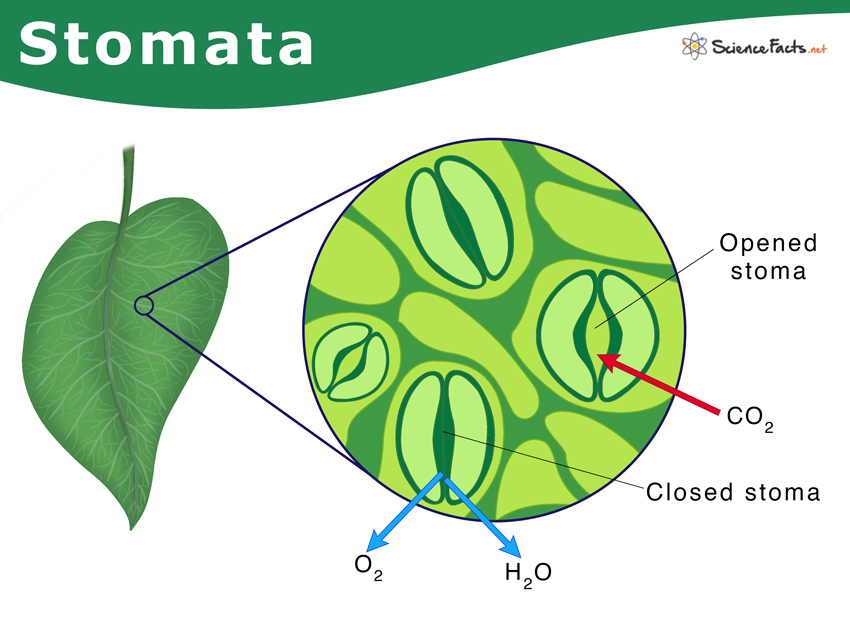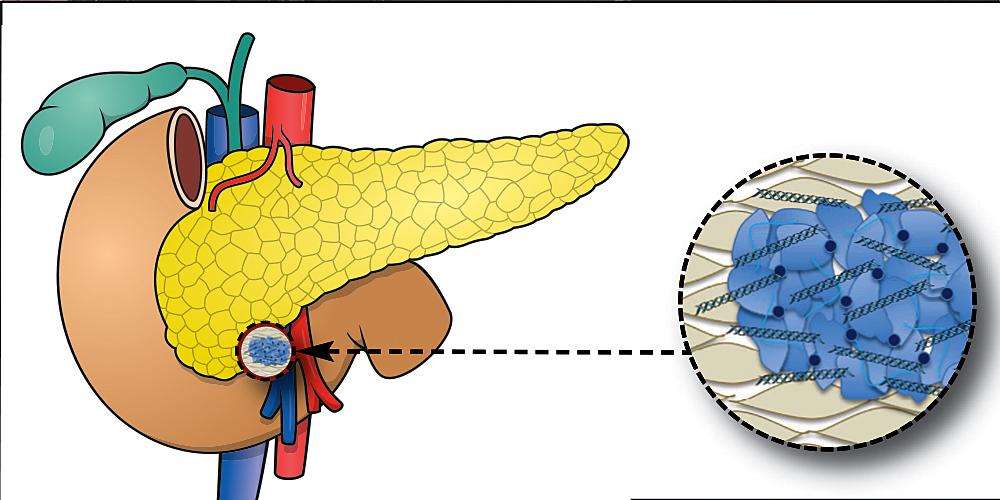What is the difference between stroma and stoma – What’s the difference between stroma and stoma? These two words, though similar in sound, refer to vastly different structures within the world of biology. Stroma, a term often associated with support and framework, plays a crucial role in organizing cells and tissues. On the other hand, stoma, found primarily in plants, acts as tiny pores responsible for the exchange of gases, essential for life-sustaining processes like photosynthesis and respiration.
Understanding the distinction between these two terms is key to appreciating the intricate workings of living organisms. While one provides the structural backbone, the other facilitates vital gas exchange, highlighting the diverse functions that contribute to the overall harmony of life.
Introduction: What Is The Difference Between Stroma And Stoma

The terms “stroma” and “stoma” are often confused due to their similar spelling. However, they represent distinct structures with entirely different roles in biology. “Stroma” refers to the supporting framework or matrix of an organ or tissue. It provides structural support and houses the functional cells within the organ. In contrast, “stoma” refers to a pore-like opening found on the surface of leaves, primarily in plants.
These openings play a crucial role in gas exchange, allowing for the intake of carbon dioxide and the release of oxygen during photosynthesis.
The Distinction Between Stroma and Stoma
The fundamental difference between “stroma” and “stoma” lies in their functions and locations. “Stroma” is a structural component, providing support and housing for functional cells, while “stoma” is a functional opening involved in gas exchange.
Stroma

The stroma is like the backstage of a theater, providing the essential support and structure for the actors, or cells, to perform their roles. It’s the framework that holds everything together and ensures the smooth functioning of tissues and organs.
Composition of Stroma
The composition of stroma varies depending on the tissue it supports. In connective tissue, stroma is primarily composed of extracellular matrix (ECM), a complex mixture of proteins, carbohydrates, and water. The ECM provides structural support, anchors cells, and facilitates communication between cells. For example, in cartilage, the ECM is rich in collagen fibers, which give it its strength and flexibility.
In bone, the ECM is mineralized with calcium phosphate, making it hard and rigid.In plant tissues, stroma refers to the fluid-filled space within chloroplasts, the organelles responsible for photosynthesis. The stroma in chloroplasts contains enzymes, ribosomes, and DNA, which are essential for carrying out photosynthesis.
Structural Support and Organization
Stroma plays a crucial role in providing structural support and organization to cells and tissues. In connective tissue, the ECM provides a scaffold for cells to attach to and migrate through. This is essential for tissue development, repair, and maintenance. For instance, in tendons, the ECM is aligned in a parallel fashion, providing strength and flexibility for muscle attachment to bone.In plant tissues, the stroma within chloroplasts provides a framework for the arrangement of thylakoid membranes, which are essential for light-dependent reactions in photosynthesis.
The stroma also acts as a reservoir for essential molecules and enzymes required for photosynthesis.
Interaction with Other Cellular Components
Stroma interacts with other cellular components in various ways. In connective tissue, cells like fibroblasts, chondrocytes, and osteoblasts are embedded within the ECM. These cells produce and maintain the ECM, ensuring its integrity and function.In plant tissues, the stroma within chloroplasts interacts with the thylakoid membranes, providing a platform for the transfer of electrons and energy during photosynthesis. The stroma also interacts with the nucleus, receiving instructions for protein synthesis and other cellular processes.
Stoma

Stomata, singular stoma, are tiny pores found on the surface of plant leaves and stems. They play a crucial role in the exchange of gases between the plant and its environment, allowing for the intake of carbon dioxide (CO 2) for photosynthesis and the release of oxygen (O 2) as a byproduct.
Structure and Function of Stomata, What is the difference between stroma and stoma
Stomata are typically surrounded by two specialized guard cells that regulate the opening and closing of the pore. These guard cells are bean-shaped and contain chloroplasts, enabling them to perform photosynthesis. The structure of stomata is vital for their function. The opening and closing of the stomata are regulated by the turgor pressure within the guard cells. When guard cells are turgid, they swell, causing the stomata to open.
Conversely, when guard cells lose turgor pressure, they become flaccid, causing the stomata to close.
Mechanism of Stomatal Opening and Closing
The opening and closing of stomata are influenced by several factors, including:* Light intensity: Stomata typically open during the day when light intensity is high, allowing for increased CO 2 uptake for photosynthesis.
Carbon dioxide concentration
High CO 2 levels inside the leaf signal the need for photosynthesis, prompting the stomata to close.
Water availability
When water is scarce, stomata close to minimize water loss through transpiration.
Temperature
High temperatures can cause stomata to close to prevent excessive water loss.The mechanism of stomatal opening and closing involves changes in the turgor pressure of guard cells. When guard cells take up water, they swell and become turgid, causing the stomata to open. Conversely, when guard cells lose water, they become flaccid, causing the stomata to close. This turgor pressure change is regulated by the movement of potassium ions (K +) into and out of the guard cells.
Role of Stomata in Photosynthesis and Transpiration
Stomata play a crucial role in both photosynthesis and transpiration.* Photosynthesis: Stomata allow for the uptake of CO 2 from the atmosphere, which is essential for photosynthesis. CO 2 is used to synthesize glucose, a sugar that provides energy for the plant.
Transpiration
Stomata also allow for the release of water vapor from the plant. This process, known as transpiration, helps to cool the plant and transport water and nutrients throughout the plant.The opening and closing of stomata are carefully regulated to maintain a balance between photosynthesis and transpiration. When water is plentiful, stomata can remain open for extended periods to maximize CO 2 uptake for photosynthesis.
However, when water is scarce, stomata close to minimize water loss through transpiration.
Distinguishing Features
The differences between stroma and stoma are not just about their names but also about their roles and structures within different tissues. To better understand these differences, we’ll delve into their key characteristics.
Comparison of Stroma and Stoma
The table below summarizes the key features of stroma and stoma:
| Feature | Stroma | Stoma |
|---|---|---|
| Location | Found in various tissues, including the chloroplasts of plants, the connective tissues of organs, and the supporting framework of the ovary | Found in the leaves of plants, specifically in the epidermis |
| Function | Provides structural support, facilitates metabolic processes, and helps in cell division | Regulates gas exchange (CO2 intake and O2 release) and water vapor loss |
| Composition | Composed of various components, including proteins, carbohydrates, lipids, and water. In chloroplasts, it contains enzymes and pigments involved in photosynthesis | Composed of two guard cells that surround a pore called the stomatal pore. The guard cells control the opening and closing of the pore, regulating gas exchange |
Visual Representation
Imagine a plant leaf. The stoma, resembling tiny pores on the leaf surface, are surrounded by specialized cells called guard cells. These pores allow for gas exchange, like the intake of carbon dioxide for photosynthesis and the release of oxygen. In contrast, the stroma is the inner matrix of the chloroplast, the organelle responsible for photosynthesis. It contains enzymes and pigments that facilitate the process of converting light energy into chemical energy.
The stroma provides a platform for these reactions to occur.
Applications and Significance
The differences between stroma and stoma are not just anatomical curiosities; they have profound implications for various biological processes, ranging from tissue regeneration to global climate change.
Importance of Stroma in Tissue Regeneration and Wound Healing
Stroma, the supportive framework of tissues and organs, plays a critical role in tissue regeneration and wound healing. Its ability to provide structural support, promote cell growth and differentiation, and facilitate the formation of new blood vessels is essential for repairing damaged tissues.
- Scaffolding for New Tissues: Stroma acts as a scaffold for new cells to migrate and grow, providing the necessary structural support for the formation of new tissues.
- Signaling Molecules: Stroma cells release signaling molecules that stimulate the proliferation and differentiation of stem cells, promoting the formation of new cells to replace damaged ones.
- Angiogenesis: Stroma is involved in angiogenesis, the formation of new blood vessels, which is crucial for delivering oxygen and nutrients to the healing tissues.
Understanding the role of stroma in these processes is crucial for developing novel therapeutic strategies for treating various diseases, including cancer, diabetes, and heart disease.
Regulation of Stomata is Crucial for Plant Survival and Adaptation
Stomata, the tiny pores on plant leaves, play a vital role in regulating gas exchange and water loss, which are essential for plant survival and adaptation to diverse environments.
- Photosynthesis: Stomata open to allow carbon dioxide (CO 2) to enter the leaves for photosynthesis, the process by which plants convert sunlight into energy.
- Water Loss: Stomata also open to release water vapor, a process called transpiration. This helps to cool the plant and transport water from the roots to the leaves.
- Environmental Adaptation: Stomata can close to prevent excessive water loss in dry environments or during periods of drought.
The ability of plants to regulate stomata opening and closing is essential for their survival in various environments.
Role of Stomata in Global Carbon Cycling and Climate Change
Stomata play a critical role in global carbon cycling by controlling the uptake of CO 2 from the atmosphere. This process is essential for regulating the Earth’s climate.
- CO2 Uptake: Plants absorb CO 2 through their stomata for photosynthesis, effectively removing it from the atmosphere.
- Climate Change: As atmospheric CO 2 levels rise, plants can increase their CO 2 uptake, potentially mitigating the effects of climate change.
- Feedback Mechanisms: However, the response of stomata to rising CO 2 levels is complex and can vary depending on plant species and environmental conditions.
Understanding the role of stomata in global carbon cycling is crucial for developing strategies to mitigate climate change and ensure the sustainability of our planet.
From the supportive framework of stroma to the crucial gas exchange of stoma, these seemingly simple structures reveal the remarkable complexity of life. Understanding their roles sheds light on the intricate interplay of cellular processes, highlighting the interconnectedness of biological systems. Whether it’s the intricate network of stroma supporting tissues or the delicate balance of stomatal regulation, these structures stand as testaments to the elegant design of nature.
Key Questions Answered
What is the difference between stroma in plants and stroma in animals?
While both refer to supporting structures, plant stroma is found in chloroplasts, the sites of photosynthesis, and is involved in the light-independent reactions. Animal stroma is more general, referring to the connective tissue that supports organs and tissues.
What is the role of stomata in plant defense?
Stomata can close to prevent water loss during drought conditions, and some plants can even release chemicals through stomata to deter herbivores.
Can stomata be found in animals?
No, stomata are exclusive to plants. Animals have different mechanisms for gas exchange, such as lungs or gills.
How does the environment affect stomatal opening and closing?
Stomata are sensitive to factors like light intensity, carbon dioxide concentration, and humidity. They open during the day to allow photosynthesis and close at night to conserve water.
What are the implications of stomatal regulation for climate change?
Stomata play a critical role in global carbon cycling. Changes in stomatal behavior due to climate change can impact plant growth and carbon dioxide uptake, influencing the Earth’s climate system.






